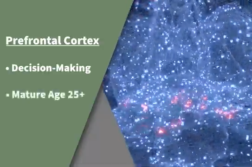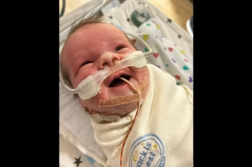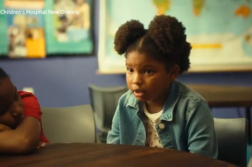CLEVELAND, Ohio. (Ivanhoe Newswire) — One in a hundred babies are born with some type of congenital heart defects. Now doctors are saving the tiniest of babies even before birth. One very rare heart surgery was done while the mother was just 24 weeks pregnant. If the procedure failed, there was little hope for the baby boy’s survival.
If only this little guy knew the road he’s already traveled.
“They didn’t think he was going to make it to term,” Anthony Catanese said.
Heather Catanese told Ivanhoe, “They said that there was a problem with the heart.”
An ultrasound at 24 weeks revealed one of Lorenzo’s aortic valves wasn’t working. It could develop into hypoplastic left heart syndrome
“Some people call it half a heart syndrome because the left side is missing,” Jim Strainic, MD, Pediatric Cardiologist at UH Rainbow in Cleveland described.
If left untreated, babies live just a few days.
Dr. Strainic offered a new procedure, fetal intervention, to try and open the valve allowing Lorenzo’s heart to grow normally.
“We did it as a chance to meet our son,” Anthony Catanese said.
Seven doctors took part in the procedure that lasted 20 minutes.
“The needle goes through mom’s skin, through the uterus and through the baby’s chest into the heart,” Dr. Strainic explained.
It’s so precise a procedure it takes one doctor to put the needle in, another to place the balloon, smaller than a penny, in the aortic valve and another to expand the balloon.
“Even up until the birth, nobody truly knew how he was going to do after he was born,” Heather Catanese said.
Four days after birth, Lorenzo left the hospital with his mom and dad. Fast forward two years, the family is back at the hospital in Cleveland to thank the team that saved Lorenzo’s life and to donate $10,000 to help those whose unborn babies need a lifesaving procedure.
“I mean they didn’t just save his life, they saved his quality of life,” Heather Catanese said.
Lorenzo still has an abnormal aortic valve. He’ll have checkups every six months for the rest of his life and probably in his teens or twenties he will need the valve replaced. He’s not on any medications and doctors say he should be able to live a very normal, healthy life.
Contributors to this news report include: Marsha Lewis, Producer; Kirk Manson, Videographer; Roque Correa, Editor.
To receive a free weekly e-mail on Medical Breakthroughs from Ivanhoe, sign up at: http://www.ivanhoe.com/ftk
MEDICAL BREAKTHROUGHS
RESEARCH SUMMARY
TOPIC: SAVING BABY LORENZO … BEFORE BIRTH!
REPORT: MB #4705
BACKGROUND: Congenital heart defects (CHDs) are complications with the heart’s structure that are found at birth. Common examples include holes in the inside walls of the heart and narrowed or leaky valves. In more severe forms of CHDs, blood vessels or heart chambers may be missing, poorly formed, and/or in the wrong place. Nearly 40,000 infants in the U.S. are born each year with CHDs. CHDs are as common as autism and about 25 times more common than cystic fibrosis. Approximately two to three million individuals are thought to be living in the U.S. with CHDs. Thanks to improvements in survival, the number of adults living with CHDs is increasing and is now believed to at least be equal to, if not greater than, the number of children living with CHDs.
(Source: https://mendedhearts.org/story/chd-facts-and-statistics/)
CHDs CURRENT TREATMENTS: A CHD may have no long-term effect on a child’s health, and in some instances, may even correct itself as the child ages. Some children and adults have their CHDs repaired using catheterization techniques, which allow the repair to be done without surgically opening the chest and heart. In open-heart surgery, the chest must be opened, and minimally invasive heart surgery is the option. If a serious heart defect can’t be repaired, a heart transplant may be needed. Some mild CHDs, especially those found later in childhood or adulthood, can be treated with medications that help the heart work more efficiently. Although the outcomes for children with heart defects have improved dramatically, most people, except those with very simple defects, will require ongoing care, even after corrective surgery.
ADVANCES IN VALVE REPLACEMENT: UCLA’s Congenital Cardiac Catheterization Program is taking advantage of new technologies in helping patients with congenital heart disease. The team is among the most experienced in the nation in performing minimally invasive transcatheter valve replacement. While the Melody valve was specifically designed to treat right ventricular outflow tract (RVOT) conduit dysfunction without the need for open-heart surgery, the Sapien valve was designed as a replacement of the aortic valve in elderly patients with calcific aortic stenosis. The team of doctors is using both the Melody and Sapien valves for not only the pulmonary and aortic positions, but also the mitral and tricuspid valves in patients with congenital heart disease. Although many patients continue to require surgical valve replacements, the team continues to pioneer new methods to treat patients using minimally invasive valve replacements.
(Source: https://www.uclahealth.org/Workfiles/clinical_updates/pediatrics/15v3-08_Cathlab.pdf)
FOR MORE INFORMATION ON THIS REPORT, PLEASE CONTACT:
Katelyn McCarthy
Katelyn.mccarthy@uhhospitals.org
If this story or any other Ivanhoe story has impacted your life or prompted you or someone you know to seek or change treatments, please let us know by contacting Marjorie Bekaert Thomas at mthomas@ivanhoe.com




